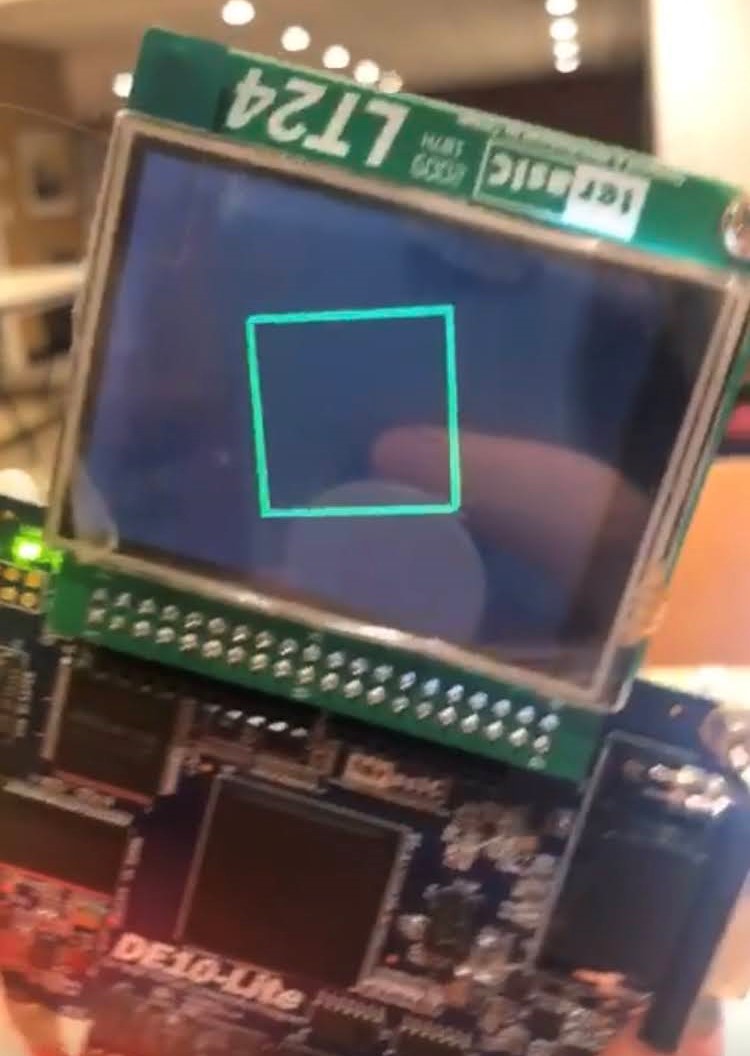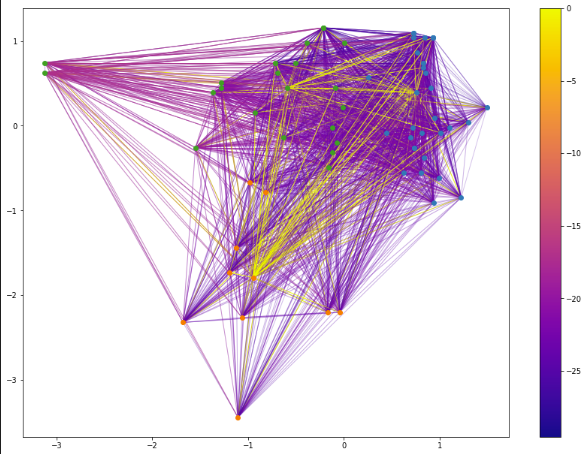My Projects!
Embedded Systems
Project Summary
The second year sequence in the Computer Engineering degree at MSOE involves the Embedded Systems track, where students gain experience working on developing on a physical board to execute various tasks. In the first class, Embedded 1, the student is provided a board to develop on, writing exclusively in ARM assembly. In the following class, Embedded 2, the student works with the same medium but instead develops in the C programming language. Lastly, in the capstone class Embedded 3, the student works with a new board that they must configure to connect to different peripherals. Throughout the quarter, the student will program in VHDL to define the computer system and any connections that are made to outside devices. Each program would build upon the last, slowly incorporating more and more outside devices, such as LEDs, servo motors, cameras, joysticks, gyros and LCD screens. The student worked individually to implement each peripheral, slowly culminating to the final program to have a camera read in an image and display the image to an LCD screen.
Project Analysis
I was able to implement all of the programs successfully, earning an A grade for each project in all of the classes.
From the first course, I learned the basics of interfacing with an embedded system, as well as how to program in ARM assembly. I learned how peripherals were communicated to in the board, both physically through the hardware and programmatically through the software. However, each program took a long time to develop, since ARM assembly is very verbose compared to higher-level languages. Nonetheless, I spent the necessary time to complete each program, learning how "systems on a chip" are developed.
The second class taught me how to develop in C, which seemed like a middle ground between high level programs like python and low level ARM. Otherwise, I used another set of peripherals, learning how to communicate through different protocols such as USART, I2C, and more.
The last class was the most complex and the most fun, since all of the safety structure of guidance in the first two classes were gone. I picked up how to program my board quickly, developing each program using a new peripheral. Refreshing on my VHDL, I was able to configure the board so the board's outputs and inputs connected to the right devices. I learned how to set my own system up so that the memory was configured best for my program, that way I could more easily program the software without complexity. In the end, I was able to get my board to display camera images, which I had worried would be too challenging for me.
Honestly, this was my favorite class at MSOE. It was challenging in its complexity, but so satisfying when everything clicked and worked.

Affinity Propogation
Project Summary
As a Computer Scientist at MSOE, one of the required courses is Machine Learning. As the final project for the class, students must complete a research project, where they learn a new algorithm for data analysis. We had already learned many types of algorithms earlier, such as k-means and KNN, so now it was up to us to learn a new one. Students worked in groups of 2-3 people to do the full research of the algorithm and write a small program to demonstrate its effects. I grouped with my roommate at the time to research the Affinity Propogation algorithm for data clustering. Together, we had to use a dataset to test our algorithm, displaying the results and an explanation of the algorithm via presentation.
Project Analysis
Through doing this research project, we learned how the algorithm worked well enough to be able to write an implementation ourselves. the algorithm is a form of clustering that enables our data points to relate to each other, communicating about which data points are the best at representing the entire data set. This research taught me how difficult it can be to find exactly the answers I'm looking for when trying to learn, since there's so much information on the internet. I found it rewarding to find the sources we had to learn the concepts, and learning how to implement the algorithm also helped me in understanding it. Through developing our own implementation, we also were able to practice our skills in python / matplotlib programming, dealing with data and displaying it coherently. To explore this algorithm fully, we found a dataset of music, and ran our written Affinity Propogation on it, displayed below. However, we also needed other students to understand the algorithm at a high level view, so we compiled an easy-to-view presentation detailing the algorithm. This brought invaluable learning of how to break down a very complex problem to very simple steps for anyone with general Machine Learning knowledge to understand.

FEAR Robotics
Project Summary
Nicolet FEAR was my high school robotics team. It took part in a robotic development competition called FRC, hosted by FIRST. Each year, we were given 6 weeks to develop a fully functioning robot designed to partake in the years game, usually involving heavy competition and equally devoted cooperation on part of the teams. The robotics club at Nicolet is the largest group on the high school campus, which sometimes made it challenging to have to manage. However, the students worked together to accomplish all facets of development, from accruing team sponsorships to actually developing the physical robot. On the team, I mostly focussed on physical development, writing software that would run the robot, welding and cutting components, fixing issues in design with a pit team, and managing groups as the vice president of operations on the team.
Project Analysis
This program ignited my passion for programming! I hadn't done any serious software development before, but I really wanted to join the team, and all of my friends had been on the programming team. Thus, I had to learn how to program to be on the team, where they used Java to control the robot. I quickly learned the fundamentals of programming. I started by developing small projects to make the robot move with joystick input. I got so good at programming that when the team went to the World Competition, I was brought along as one of the lead programmers.
The next year, I branched out to more physical building. I learned the fundamentals of fabrication and robot design, working in different groups to create drive bases, pneumatic actuators, flywheel assemblies, and more. The next competition, I was brought on as a Pit Captian. This role meant that I was excellent in managing a highly skilled team of individuals, with the purpose of fixing any issues on the robot quickly. I had to learn how to communicate with my team members what I needed from them, as well as listen to their needs and the problem descriptions from the robot drivers. I also became extremely familiar with many various tools at our disposal.
In my last year on the team, I was elected as the Vice President of Operations. As VP of Ops, I was in charge of all aspects of development on the robot. I had a final say in any design choices, and worked with students to guide them and teach them new tools and processes. I learned too, how to manage multiple groups of people to achieve a common goal, how to teach others my skills, and even acquiring a certificate in 3D modeling.

Javascript Graphics
Project Summary
The summer of 2022, I had a personal goal to learn a new programming language. I ended up wanting to learn javascript, and decided that the best way to do that would be to develop something interesting to me. After some research I decided that doing some sort of graphical animation would be interesting to work on. I found a youtube series online done by The Coding Train that introduces a JS library. Starting from there, I worked on my own to implement programs to do different graphics. This was for my own learning, but I wanted to ensure I had a good grasp of the language, so I tried doing at least a dozen different programs.
Project Analysis
While learning the library, I learned how to use a new form of documentation, since their documentation had good and bad aspects. With that, I was still able to write programs sufficiently. Most of the time I would start my development using the main topic from a video, and then checking my solution against theirs. That way I could challenge myself to use what I'd learned but always allowed myself to learn from them too. I think I did well overall! I implemented quite a few different programs, each using a new concept. Some of my favorites are shown below. I had always been interested in Perlin Noise and had wanted to make my own implementation but never had the time. Here I was able to fully research and understand what the algorithm was doing and implment it myself! I also am fascinated by fractals, which is why I chose to implement a Menger Sponge, also shown below, rotating in 3D space. In the end, I compiled a repository of different programs written in P5js. I also wanted to host my site using a lightweight server client, which I also had to learn how to incorporate into my projects, and did so successfully.
